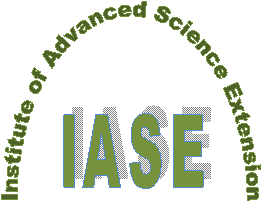International journal of
ADVANCED AND APPLIED SCIENCES
EISSN: 2313-3724, Print ISSN:2313-626X
Frequency: 12
![]()
Volume 4, Issue 11 (November 2017), Pages: 110-115
----------------------------------------------
Original Research Paper
Title: Phytochemical screening and toxicity testing of Atuna racemosa Rafin. chrysobalanaceae shell and seed extracts
Author(s): Jinebeth M. Pacaňa 1, Van Ryan Kristopher R. Galarpe 2, *
Affiliation(s):
1Chemistry Department (BS Chemistry), University of Science and Technology of Southern Philippines (formerly Mindanao University of Science and Technology), Cagayan de Oro, Philippines
2Physics Department, University of Science and Technology of Southern Philippines (formerly Mindanao University of Science and Technology), Cagayan de Oro, Philippines
https://doi.org/10.21833/ijaas.2017.011.017
Abstract:
This research evaluated the phytochemical profile and toxicological properties of the aqueous, ethyl acetate, methanol, and decocted extracts of the shell and seed of Atuna racemosa Rafin. Chrysobalanaceae (tabon-tabon). The phytochemical screening was qualitatively tested while Brine Shrimp Lethality Assay (BSLA) was employed for toxicity testing of the extracts. Phytochemical screening of A. racemosa extracts resulted in the detection of the presence of alkaloids, anthraquinones, coumarins, flavonoids, saponins, tannins and terpenoids. The A. racemosa shell and seed extracts induced medium to highly toxic activity to brine shrimp nauplii at LC50 values of 268.605 µg/mL (aqueous shell) 165.195 µg/mL (aqueous seed), 277.9 µg/mL (ethyl acetate shell), 419.919 µg/mL (ethyl acetate seed), 116.032 µg/mL (methanol shell), 92.0427 µg/mL (methanol seed), 482.78 µg/mL (decoction shell), and 121.111 µg/mL (decoction seed), respectively. Ethyl acetate and methanol extracts of A. racemosa seed showed good toxicological properties. Further investigation is needed to determine the bioactive components present in these extracts.
© 2017 The Authors. Published by IASE.
This is an open access article under the CC BY-NC-ND license (http://creativecommons.org/licenses/by-nc-nd/4.0/).
Keywords: Atuna racemosa, Phytochemical, Lethality assay, Extracts
Article History: Received 2 February 2017, Received in revised form 8 September 2017, Accepted 11 September 2017
Digital Object Identifier:
https://doi.org/10.21833/ijaas.2017.011.017
Citation:
Pacaňa JM and Galarpe VRKR (2017). Phytochemical screening and toxicity testing of Atuna racemosa Rafin. chrysobalanaceae shell and seed extracts. International Journal of Advanced and Applied Sciences, 4(11): 110-115
Permanent Link:
http://www.science-gate.com/IJAAS/V4I11/Paca.html
----------------------------------------------
References (17)
- Abioye EO, Akinpelu DA, Aiyegoro OA, Adegboye MF, Oni MO, and Okoh AI (2013). Preliminary phytochemical screening and antibacterial properties of crude stem bark extracts and fractions of Parkia biglobosa (Jacq.). Molecules, 18(7): 8485-8499. https://doi.org/10.3390/molecules18078485 PMid:23873387
- Amirkia V and Heinrich M (2014). Alkaloids as drug leads–A predictive structural and biodiversity-based analysis. Phytochemistry Letters, 10: xlviii-liii. https://doi.org/10.1016/j.phytol.2014.06.015
- Buenz EJ (2006). A brief communication Hepatocytes Detoxify Atuna racemosa extract. Experimental Biology and Medicine, 231(11): 1739-1743. https://doi.org/10.1177/153537020623101111
- Buenz EJ (2007). Mitochondrial involvement in Atuna racemosa induced toxicity. Journal of Ethno Pharmacology, 109(2): 304-311. https://doi.org/10.1016/j.jep.2006.07.043 PMid:16978818
- Buenz EJ, Tillner JE, Limburg P, and Bauer BA (2007). Antibacterial properties and toxicity of Atuna racemosa extract depend on kernel maturity. Journal of Ethno Pharmacology, 111(3): 592-597. https://doi.org/10.1016/j.jep.2007.01.020 PMid:17321090
- Clarkson C, Maharaj VJ, Crouch NR, Grace OM, Pillay P, Matsabisa MG, and Folb PI (2004). In vitro antiplasmodial activity of medicinal plants native to or naturalised in South Africa. Journal of Ethno Pharmacology, 92(2): 177-191. https://doi.org/10.1016/j.jep.2004.02.011 PMid:15137999
- Dave H and Ledwani L (2012). A review on anthraquinones isolated from Cassia species and their applications. Indian Journal of Natural Products and Resources, 3(3): 291-319.
- Dhalwal K, Deshpande YS, and Purohit AP (2007). Evaluation of in vitro antioxidant activity of Sida rhombifolia (L.) ssp. retusa (L.). Journal of Medicinal Food, 10(4): 683-688. https://doi.org/10.1089/jmf.2006.129 PMid:18158841
- Ghasemzadeh A and Ghasemzadeh N (2011). Flavonoids and phenolic acids: Role and biochemical activity in plants and human. Journal of Medicinal Plants Research, 5(31): 6697-6703. https://doi.org/10.5897/JMPR11.1404
- Jain PK and Joshi H (2012). Coumarin: Chemical and pharmacological profile. Journal of Applied Pharmaceutical Science 2(6): 236-240.
- Krishnaraju AV, Rao TV, Sundararaju D, Vanisree M, Tsay HS, and Subbaraju GV (2005). Assessment of bioactivity of Indian medicinal plants using brine shrimp (Artemia salina) lethality assay. International Journal of Applied Science and Engineering, 3(2): 125-134.
- Mclaughlin JL, Rogers LL, and Anderson JE (1998). The use of biological assays to evaluate botanicals. Drug information journal, 32(2): 513-524. https://doi.org/10.1177/009286159803200223
- Okuda T and Ito H (2011). Tannins of constant structure in medicinal and food plants—hydrolyzable tannins and polyphenols related to tannins. Molecules, 16(3): 2191-2217. https://doi.org/10.3390/molecules16032191
- Okwu DE (2005). Phytochemicals, vitamins and mineral contents of two Nigerian medicinal plants. International Journal of Molecular Medicine and Advance Sciences, 1(4): 375-381.
- Olowa LF and Nu-eza OM (2013). Brine shrimp lethality assay of the ethanolic extracts of three selected species of medicinal plants from Iligan City, Philippines. International Research Journal of Biological Sciences, 2(11): 74-77.
- Tiwari P, Kumar B, Kaur M, Kaur G, and Kaur H (2011). Phytochemical screening and extraction: A review. Internationale Pharmaceutica Sciencia, 1(1): 98-106.
- Zwenger S (2008). Plant terpenoids: Applications and future potentials. Biotechnology and Molecular Biology Reviews, 3(1): 1-7.
